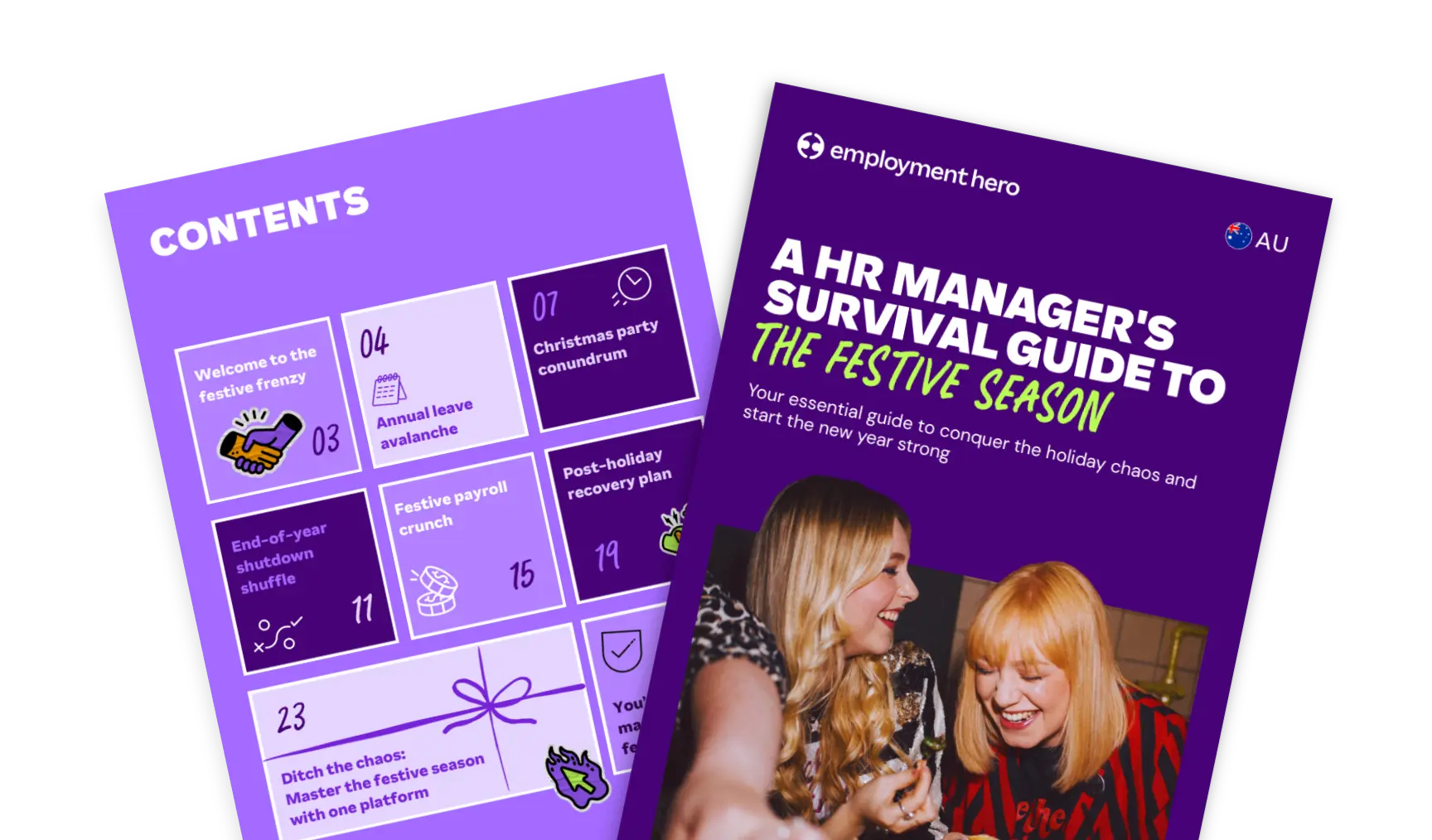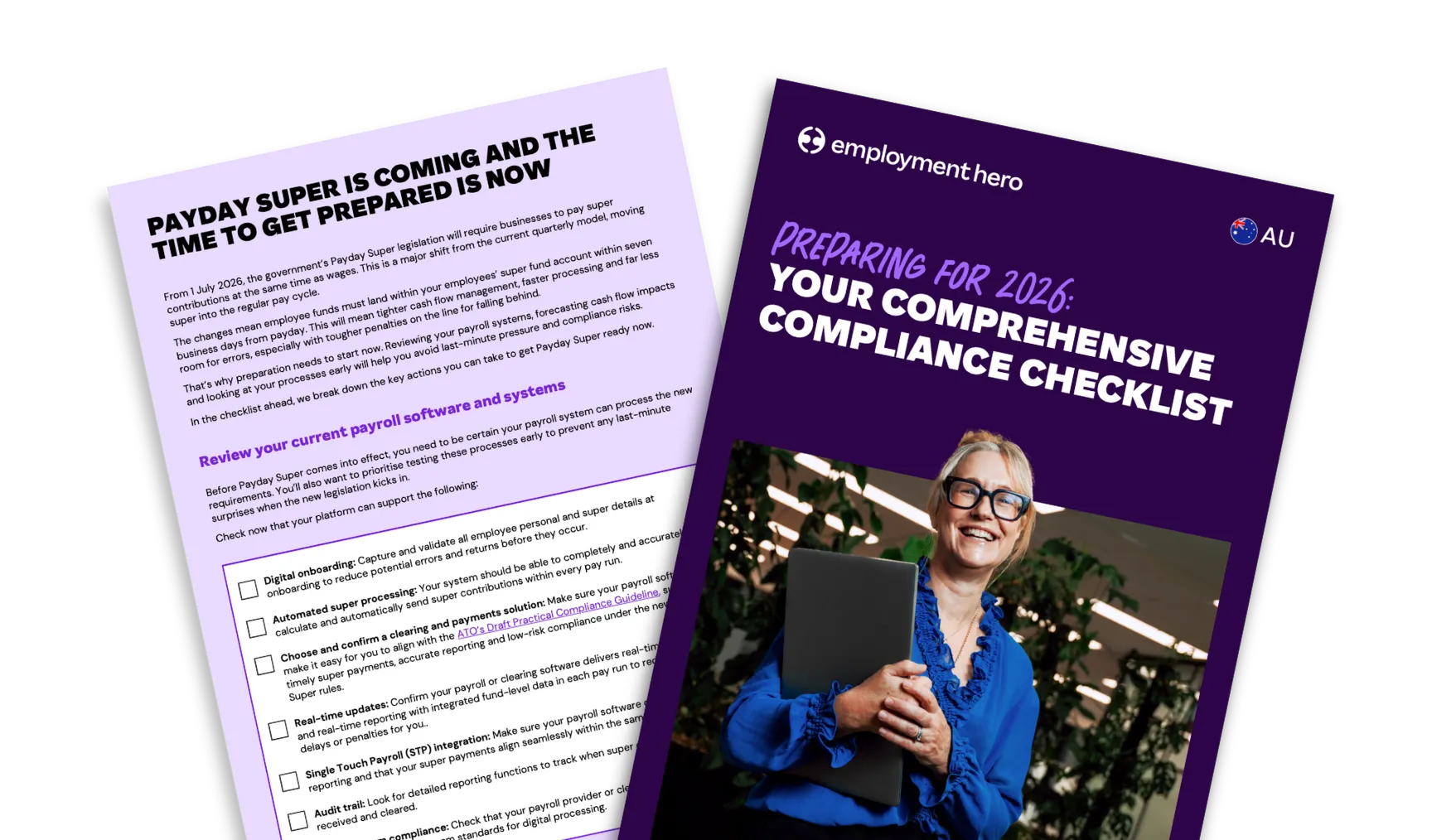Free Mental Health Posters for the Workplace
Published
Free Mental Health Posters for the Workplace
Mental wellbeing is crucial, but is your workplace truly supporting it? Clear, visible reminders can make it easier for your team to ask for help, speak up, or take a moment when they need it. One effective way to raise awareness is through strategically placed posters that normalise mental health conversations.
What is included in this poster?
This mental health poster is a free resource that lists key national helplines and support services that offer confidential support for a range of mental health concerns. Workers are encouraged to use these resources, and the poster is designed to be clear and accessible.
You can print it for your lunchroom noticeboard or share it digitally with staff as part of your internal comms.
What are common mental health issues employees face at work?
Even in supportive workplaces, mental health challenges can show up quietly. Some workers will speak up while others may push through without saying a word. Colleagues often notice changes before managers do, which is why it’s important to foster an environment where people feel encouraged to check in with each other.
Here are some of the most common issues your employees may be facing, and how they can affect your workplace:
- Stress and burnout: Ongoing pressure, unrealistic workloads, or lack of clarity can quickly lead to stress. When that stress becomes constant, it can tip into burnout, leaving employees feeling exhausted, detached, or ineffective. Burnout doesn’t just affect the individual; it can also lead to higher turnover and lost productivity across the team.
- Anxiety: Anxiety shows up in many forms such as nervousness in meetings, racing thoughts, or fear of making mistakes. It can make it harder to focus, collaborate, or take initiative. Over time, it erodes confidence and can quietly push employees into isolation or disengagement.
- Depression: Depression isn’t always visible. It may present as low energy, missed deadlines, or a shift in behaviour that’s hard to name. Without support, it can reduce motivation, increase sick leave, and affect the overall tone of a team.
- Fatigue and sleep issues: Mental health struggles often disrupt sleep, which can lead to persistent fatigue. Tired employees are more prone to mistakes, slower decision-making, and irritability. This highlights the importance of regular breaks and sustainable work practices.
- Isolation and loneliness: Remote and hybrid work have many upsides, but they can also heighten feelings of disconnection. Workers may feel like they’re going it alone, even when part of a team. Colleagues who foster regular connection can help combat this isolation.
- Grief and personal hardship: Whether it’s the loss of a loved one, financial strain, or caring for someone at home, life outside of work doesn’t pause. Employees navigating personal hardship may struggle to meet expectations, even if they’re physically present. Without support, these pressures often stay hidden and unaddressed.
How does good mental health lead to workplace success?
When mental wellness is supported at work, the benefits ripple outward. Employees feel safer, more energised, and better equipped to handle daily work challenges. For employers, that translates into increased productivity, fewer absences, and a culture people want to stay in.
Here are a few strategies that help support employee wellbeing in a meaningful, sustainable way:
- Make wellbeing visible and accessible: Posters, policies, and open conversations all send a clear signal that support is available. Small, visible actions, like sharing helpline resources or hosting wellbeing sessions, create a baseline of care that employees can rely on.
- Ask the right questions regularly: Employee wellbeing survey questions can uncover challenges that aren’t always visible. When used thoughtfully, they help Human Resource (HR) teams identify patterns, monitor morale, and respond to issues before they escalate into larger problems.
- Build mental health into manager training: A supportive manager can make all the difference. Equip people leaders with the language, tools, and confidence to talk about mental health without overstepping. It’s not about becoming counsellors, it’s about knowing how to listen, respond, and guide employees to the right support.
- Design work that’s actually sustainable: Workload and mental wellbeing are closely linked. Review expectations and processes regularly, ensuring people can take regular breaks and aren’t stretched too thin.. A culture that values output over overtime is better for everyone in the long run.
- Create space to speak up: Psychological safety doesn’t happen by accident. Make it clear that asking for help, flagging issues, or taking mental health leave won’t come with consequences. That clarity is what builds trust, and trust is what drives long-term success.
Want to go deeper? Watch our free webinar on wellness at work, it’s designed for HR leaders who want practical ways to create healthier, more resilient teams to benefits employees and employers.
What steps can businesses take to support employee wellbeing?
Creating a mentally healthy workplace doesn’t require dramatic change; it calls for thoughtful, consistent actions woven into how your organisation runs. When mental health is part of your day-to-day systems, people are more likely to speak up, seek support and stay engaged.
Here are five practical ways to embed that support:
1. Align wellbeing with your workplace policies
Mental health should be addressed in your leave policies, onboarding resources, and internal communications, rather than being treated as an add-on. Review your existing policies through the lens of mental health.
Add wellbeing resources to onboarding materials. Include a short mental health support guide in new starter packs. Ensure mental health days are clearly outlined in your leave policy alongside other entitlements.
2. Clarify roles and manage workload intentionally
Poor mental health often stems from unclear responsibilities or unsustainable demands.
Conduct quarterly workload audits by asking teams directly: “What would you stop doing if you could?” Use those insights to eliminate unnecessary tasks and clarify role boundaries.
A simple workload reset, such as shifting deadlines or pausing low-priority tasks, can immediately alleviate pressure and prevent burnout.
3. Equip managers to respond with confidence
Your people leaders are often the first to notice when something isn’t right. Create a simple “mental health conversation toolkit” for managers.
Include conversation starters, warning signs to watch for, and clear steps for when to involve HR or external support. Provide them with structured tools they can refer to in real-time. Consider a concise conversation framework and escalation guide that helps managers check in with care.
4. Look for signals in the flow of work
Mental health warning signs don’t always come through formal feedback. Train managers to spot patterns in work behaviour and attendance. Drops in output, uncharacteristic behaviour, or increasing leave requests can all point to deeper issues.
Build a simple wellbeing question into regular 1:1 templates, such as “How’s your energy level this week?” or “What’s feeling most challenging right now?” This creates space for people to talk about their capacity as part of normal work conversations.
5. Keep support visible and consistent
Awareness can’t rely on a single campaign or calendar event. Create a monthly rotation of mental health reminders across your communication channels. Rotate resources in internal Slack channels. Include support contact details in email signatures and meeting room posters.
Open team meetings with a quick reminder of available support options. Small, steady reminders normalise seeking help rather than spotlighting it as something unusual.
What role do mental health awareness posters play in promoting workplace wellbeing?
Mental health posters might seem like a small gesture, but their impact can be significant, as they are valuable tools for promoting awareness. In busy environments, these free resources cut through the noise and make support feel more accessible.
Posters also signal that mental health isn’t a taboo topic or an after-hours issue, it’s something your organisation actively acknowledges and supports. They can prompt someone to reach out, remind a manager to check in, or simply reassure a team member that they’re not alone.
They work best when they’re part of a broader wellbeing strategy, not standalone solutions.
To maximise their effectiveness, focus on these key areas:
Make support visible and accessible: Posters placed in common areas such as break rooms, bathrooms, or near lifts catch people during quiet moments when they might actually read them.
Include contact details for your Employee Assistance Programme, internal counselling services, or mental health first aiders. Make the information scannable by using clear headings and concise text. People shouldn’t have to hunt for help when they need it.
Normalise conversations about mental health: Well-designed posters signal that mental health is a workplace priority, not a taboo topic. Select messaging that aligns with your company’s culture and values.
Avoid clinical language or stock photo clichés. Simple statements like “It’s okay to not be okay” or “Your wellbeing matters here” can be more effective than lengthy explanations about stress management techniques.
Provide practical tools and tips: The most useful posters offer immediate, actionable advice. Include breathing exercises people can try at their desks. List warning signs of burnout or anxiety. Share quick stress-busters, such as “take a 5-minute walk” or “call a friend during lunch.” These provide people with something concrete to do in the moment, rather than just phone numbers to call later.
Support broader mental health initiatives: Posters are most effective when they complement other wellbeing efforts. Use them to promote upcoming mental health training sessions, remind people about flexible working policies, or highlight success stories from your mental health champions. They become reinforcement tools rather than your entire strategy.
Choose the right tone and design: Avoid preachy or overly cheerful messaging that can feel disconnected from workplace reality. Use your company’s visual identity so the posters feel integrated, not like afterthoughts.
Stale posters become invisible, so update them regularly. Rotate different messages or seasonal content to keep them fresh and relevant.
How can HR teams integrate mental health awareness into company policies?
Policies are where intent becomes practice. When mental health is thoughtfully reflected in your formal documents, it gives weight to your values and makes support easier to access and apply across the business.
Start with the frameworks your people rely on in moments of uncertainty, such as your employee handbook, grievance procedures, and manager guidelines. For example, you might include clear language around psychological safety in your workplace behaviour policy, or add a process for responding to mental health disclosures.
Consider how these policies are communicated and updated. Are they easy to find? Do they use accessible, plain English language? Are managers trained to apply them with care, not just compliance?
Mental health policies don’t need to be complex, but they do need to be consistent, visible, and lived. If you’re looking for practical tools, download our free resources, including workplace mental health posters. Looking to support employee wellbeing at scale? See how our HR software can help.
Please fill out a few short details
Related Resources
-
 Read more: HR Managers: Don’t just survive the festive season, master it
Read more: HR Managers: Don’t just survive the festive season, master itHR Managers: Don’t just survive the festive season, master it
Make year-end easier: manage leave, payroll, parties and shutdowns with confidence. Get practical tips for Australian SMEs. Download the free…
-
 Read more: Preparing for 2026: Your Compliance Checklist
Read more: Preparing for 2026: Your Compliance ChecklistPreparing for 2026: Your Compliance Checklist
Get your business ready for the 1 July 2026 changes. See practical steps for Payday Super, cash flow planning and…
-
 Read more: Monthly business budget template for employers
Read more: Monthly business budget template for employersMonthly business budget template for employers
Plan your monthly income and expenses with our free monthly business budget template. Download today to track cash flow and…























